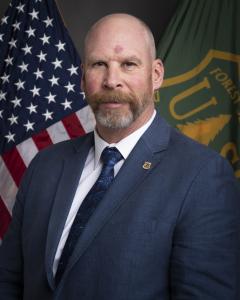Mann Gulch: Honoring the sacrifice that shapes the fire community
Seventy-five years ago today, the Mann Gulch Fire claimed the lives of 13 people. It is my distinct honor to travel to Montana today to join the Helena-Lewis and Clark National Forest, members of the smokejumper community and families of the fallen to reflect on the Mann Gulch event. We are not just commemorating a historical incident. We are honoring the lives of the 13 firefighters whose sacrifice continues to shape the wildland fire community.
As I reflect on the events of that day in 1949, I feel a connection to those who came before me. Ten of the firefighters were World War II veterans, each with their own stories and dreams. One was celebrating his 19th birthday when he got the call to respond to the fire. Another was a college student working for the summer as a recreation and fire prevention technician. Much like our workforce today, the 13 firefighters were young, had a passion for service, and came from all over the country to work for the Forest Service.
As a community, we carry these stories with us on every fire line. The lessons learned from Mann Gulch are ingrained in our training, from understanding fire behavior to ensuring communication and crew cohesion. Our continued investment in fire research, inspired by the legacy of Mann Gulch, helps us better understand and manage fire today. The development of the 10 standard fire orders and 18 watch-out situations saved countless lives. However, our work is far from over.
In the moments that claimed the lives of the 13, the Mann Gulch Fire grew by 3,000 acres in about 10 minutes, overtaking the firefighters. Comparable tragedies would be repeated in the Dude Fire (1990), the South Canyon Fire (1994) and Yarnell Hill Fire (2013), to name a few. And just this year, we’ve had multiple wildfire-related fatalities that remind us of the ever-present dangers wildland firefighters face.
While our risk management strategies are more sophisticated and technology to support safety has greatly improved, wildland fire management will always have inherent risks. Despite our best efforts, we are unable to prevent all fatalities, but we keep working toward that goal.
Reflecting on Mann Gulch, a tragedy that forever changed our wildland fire community, I find myself reminded of the importance of learning from history. And I’m inspired: Despite the dangers and challenges firefighters face, they show up to provide a service the public depends on. I’m proud of this and grateful to them. Together, let’s honor the fallen by striving for a safer future for all firefighters.
Editor's Note: Provide feedback about this column, submit questions, or suggest topics for future columns through the FS-Employee Feedback inbox.

